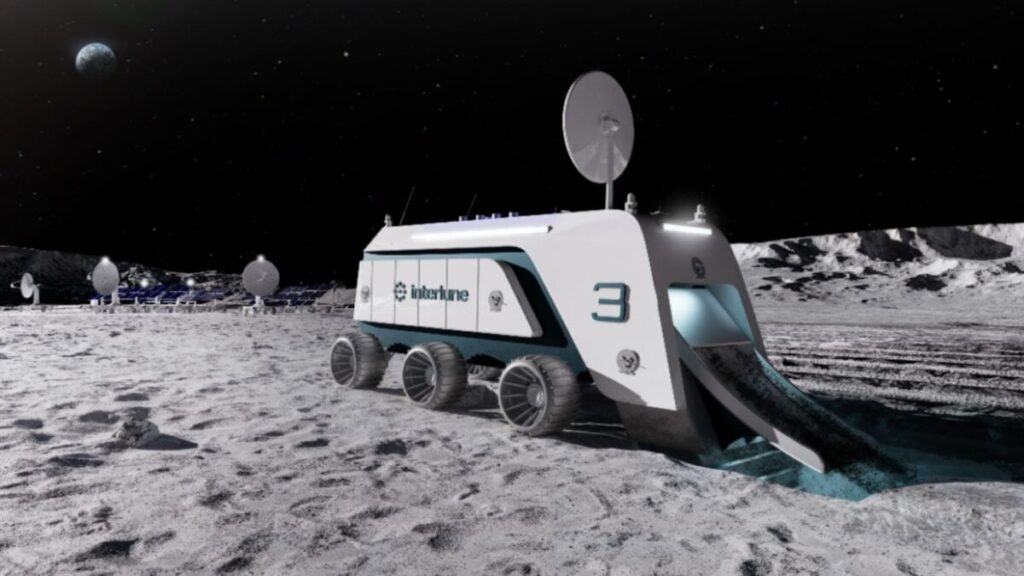
For billions of years, solar winds have bombarded the Moon, causing helium-3 to accumulate in its surface. This rare isotope, scarcely found on Earth, is increasingly sought after by industries such as quantum computing. The rising demand has prompted companies to explore the potential of lunar mining.
Interlune, a Seattle-based startup, is at the forefront of this endeavor. The company aims to extract helium-3 from the Moon’s surface and sell it to government and commercial clients in sectors like national security, medical imaging, fusion energy, and quantum computing. Recently, Interlune struck a significant commercial deal that marks the largest purchase of lunar resources to date.
The Largest Purchase of Lunar Resources Yet
On Tuesday, Interlune announced a partnership with Bluefors, a leading manufacturer of dilution refrigerators and a major consumer of helium-3. Bluefors’ cooling systems are crucial for maintaining the ultra-low temperatures necessary for quantum computers to function effectively.
As quantum computing moves towards commercialization, with tech giants like Google, IBM, and Microsoft making strides in scaling these technologies, the demand for helium-3 is expected to surge. Bluefors has agreed to purchase up to 10,000 liters of helium-3 annually from Interlune between 2028 and 2037. This isotope trades at approximately $2,500 per liter, according to a 2024 estimate by The Edelgas Group.
“A majority of the quantum technology industry relies on Bluefors systems to operate and accelerate development,” stated Rob Meyerson, Interlune co-founder and CEO. “We are excited to help Bluefors continue advancing companies toward unlocking scientific and medical discoveries made possible only by near-absolute-zero temperatures.”
How Interlune Plans to Mine the Moon by 2028
Interlune was founded in 2020 by Rob Meyerson, former president of Blue Origin, alongside former chief architect Gary Lai and Harrison Schmitt, the only living member of Apollo 17. Schmitt, a geologist, has long advocated for utilizing the Moon’s helium-3 reserves.
Over the past five years, Interlune has raised over $18 million in venture funding to develop robotic harvesters, with plans to launch a demonstration mission in 2027 and establish a pilot plant by 2029, as reported by SpaceNews. However, whether Interlune can overcome the technological, logistical, and financial challenges of lunar mining by 2028 remains uncertain.
Despite the buzz surrounding lunar mining, few companies have made tangible progress. Some experts argue that the potential value of mining the Moon’s helium-3 is overstated, noting uncertainties about the actual quantity available. Although Apollo and Luna samples show higher concentrations than Earth, they remain relatively low.
The Promise and Challenges of Lunar Resource Extraction
For now, the Moon’s helium-3 represents more promise than product. However, Interlune’s agreement with Bluefors indicates a growing demand from the quantum computing industry and could signify a major step towards a new era of space resource extraction.
This development follows a broader trend of increased interest in space resources, driven by advancements in technology and the potential for significant economic gains. As humanity looks beyond Earth for resources, the implications for industries and international relations are profound.
Looking ahead, the success of Interlune and similar ventures will depend on overcoming significant hurdles and proving the commercial viability of lunar mining. If successful, these efforts could pave the way for a new frontier in resource acquisition, reshaping industries and potentially altering geopolitical dynamics.
As the world watches these developments unfold, the race to harness extraterrestrial resources is only beginning, with the Moon’s helium-3 at the forefront of this ambitious pursuit.







